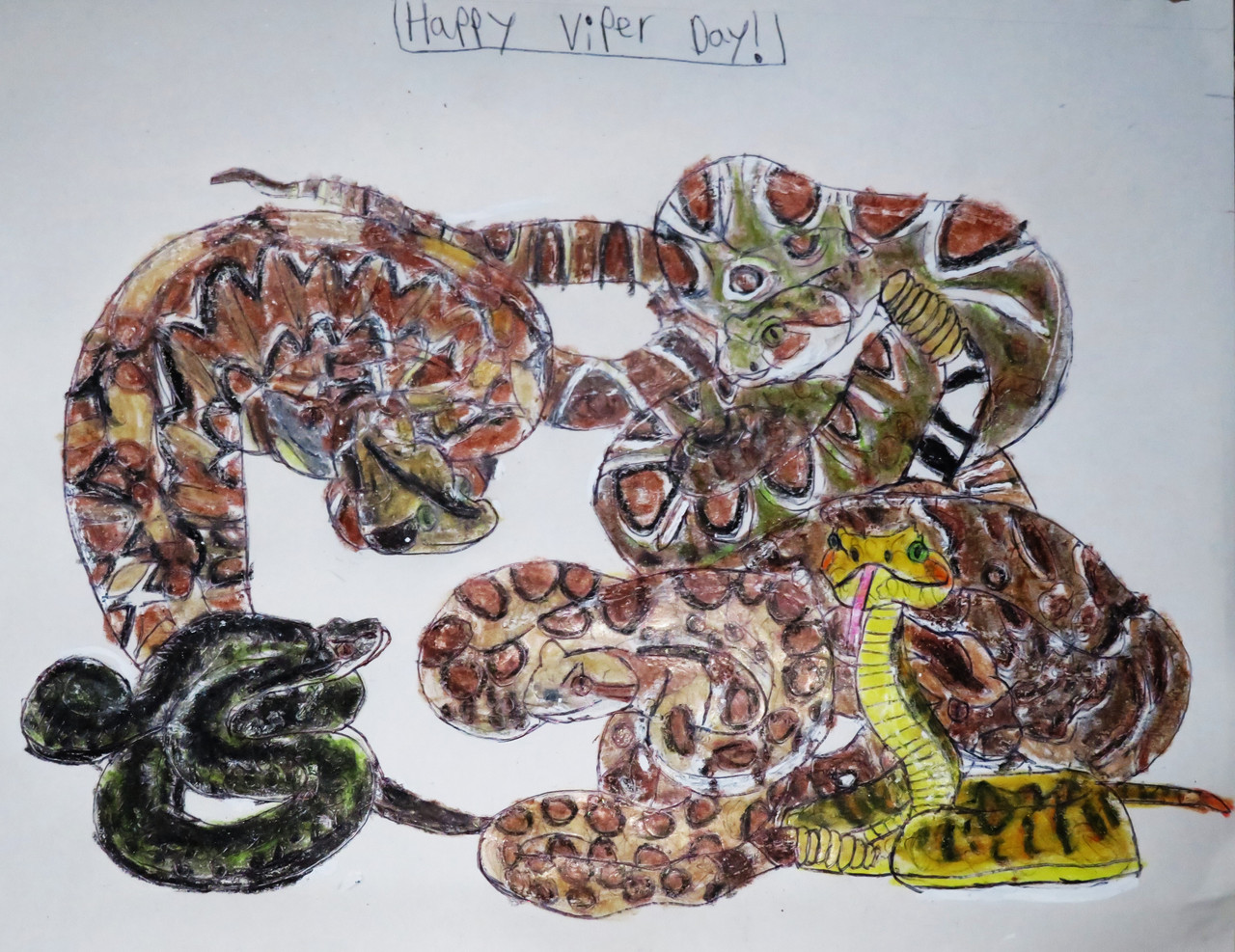HOME | DD
 Sabreleopard — Viper Day
Sabreleopard — Viper Day

#adder #conservation #eyelashviper #pitviper #rattlesnake #reptiles #sidewinder #snakes #venomous #venomoussnake #viper #viperidae #vipers #gaboonviper #ferdelance #puffadder #westerndiamondback #westerndiamondbackrattlesnake #commonviper #viperday
Published: 2024-05-06 07:30:41 +0000 UTC; Views: 1004; Favourites: 0; Downloads: 0
Redirect to original
Description
Just something to celebrate the day when we show our appreciation, bring attention for, and to increase knowledge and respect for vipers around the world and learn how we can coexist with them. Vipers belong to a family of snakes called Viperidae (which also includes adders, pit vipers, cottonmouths, even rattlesnakes). Vipers are known for their venom, which they use mostly to kill their prey, but they will use to defend themselves by striking any threat that comes too close (though it's really a last resort). The venom itself typically contains an abundance of protein-degrading enzymes (which are called proteases), which produce symptoms such as pain, strong local swelling and necrosis, blood loss from cardiovascular damage complicated by coagulopathy, and disruption of the blood-clotting system. The viper's venom is released through its two relatively long solenoglyphous (or hollow) fangs, which are are used to inject venom from glands that are located towards the rear of the upper jaws, just behind the eyes. When they are not in use, however, the fangs fold back against the roof of the mouth and are enclosed in a membranous sheath. Almost all vipers have the description of keeled scales, a stocky build with a short tail, and a triangle-shaped head distinct from the neck, which owes to the location of the venom glands. Most viper species also have vertically elliptical, or slit-shaped, pupils that can open wide to cover most of the eye or close almost completely, which helps them to see in a wide range of light levels. Typically, vipers are nocturnal and ambush their prey, as they are apparently and rather sluggish compared to many other snakes. Although most vipers are ovoviviparous (which means the eggs are retained inside the mother's body and the young emerge living), a few species lay eggs in nests. Vipers live in most parts of the world, with the exception of Antarctica, Australia, Hawaii, Madagascar, New Zealand, Ireland, and various other isolated islands. Even though plenty of people get bitten by vipers every year and a bite from a viper bite is often a very painful experience and should always be taken seriously, the bite, however, may not necessarily prove fatal. But even with prompt and proper treatment, the bite can still result in a permanent scar, and in the worst cases, any limb that the bite affected may even have to be amputated. Despite using their venom in self-defense, vipers, in cases with non-prey (such as humans), may give a dry bite (which does not inject any venom). Dry bites allow the viper to conserve its precious reserve of venom for its intended target (usually being its prey), because once the venom has been depleted, it requires time to replenish it, and that leaves the snake vulnerable. While plenty of people fear vipers for their venom, there is more to vipers than fearing them and their venom. For one thing, vipers, like any predator, control the populations of their prey (which includes rodents). Vipers are also doing what they do to survive, which is a reason why vipers are to be more respected than feared. With that said, happy Viper Day!
Related content
Comments: 2

👍: 0 ⏩: 1

👍: 0 ⏩: 0

























